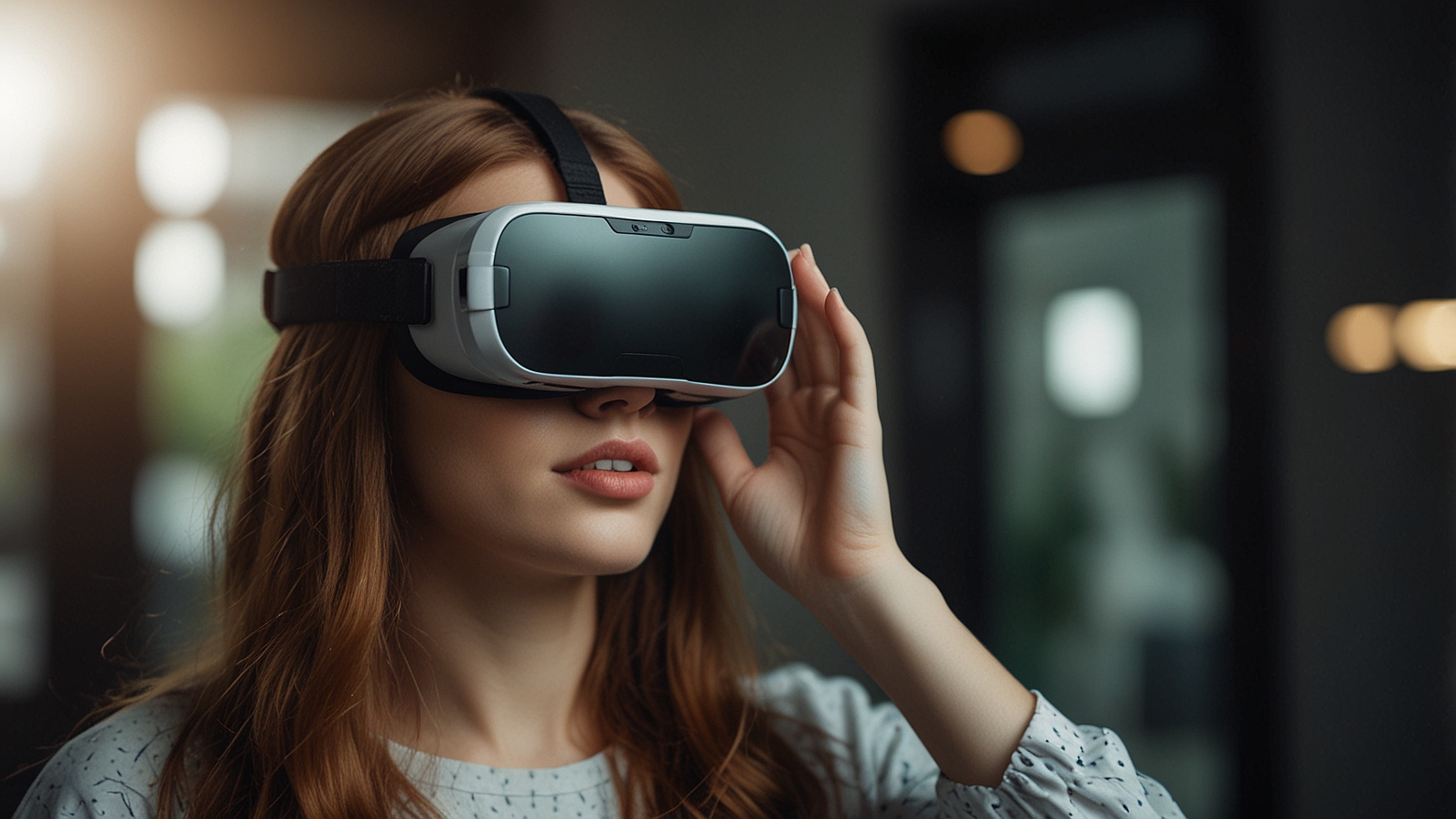In recent years, two technologies have taken the spotlight in the world of tech: Augmented Reality (AR) and Virtual Reality (VR). Both have transformed industries, entertainment, education, and healthcare, but many people still don’t fully understand the difference between them. While both aim to enhance our perception of the world, they do so in vastly different ways. So, what’s the difference between AR and VR, and how can you decide which one is right for you?
What is Augmented Reality (AR)?
Augmented Reality blends the digital world with the physical world in real-time. With AR, virtual elements are overlaid onto your view of the real world, enhancing your experience without replacing it. This can be experienced through smartphones, tablets, or AR glasses, which project digital content (such as 3D objects, information, or animations) onto the physical environment you’re interacting with.
One of the most well-known examples of AR is Pokémon Go, a mobile game that lets players catch virtual Pokémon in real-world locations. Another example is IKEA’s AR app, which lets users visualize how furniture would look in their homes before making a purchase.
The key feature of AR is that it doesn’t shut out the physical world; it enhances it. You can still see your surroundings while interacting with virtual elements, which makes AR more accessible in everyday settings.
What is Virtual Reality (VR)?
Virtual Reality, on the other hand, immerses you in a completely virtual environment. Using VR headsets like Oculus Rift, HTC Vive, or PlayStation VR, you are placed inside a fully digital world that completely replaces your real-world surroundings. This immersive experience can be used for gaming, simulations, education, and even virtual tourism.
With VR, you’re no longer interacting with your physical environment. Instead, you’re exploring a virtual world that is designed to mimic reality or create an entirely new, imaginative experience. The technology relies on head tracking, hand controllers, and sometimes even full-body suits to make you feel like you’re really there.
Unlike AR, VR offers a deeper level of immersion by isolating you from the physical world, making it ideal for gaming, training simulations, or creative applications.
Key Differences Between AR and VR
The main difference between AR and VR comes down to the level of immersion and interaction with the real world.
- Immersion:
- AR allows you to interact with both the real world and virtual objects. It enhances what you see, providing useful or fun information right in front of you. You’re still aware of your surroundings.
- VR offers full immersion. The real world disappears completely, and you’re placed inside a completely digital environment. It’s an all-encompassing experience.
- Technology:
- AR typically requires less specialized equipment. Most smartphones, tablets, and some smart glasses can run AR apps.
- VR requires dedicated hardware, such as a headset, hand controllers, and sometimes additional accessories, to create a fully immersive experience.
- Use Cases:
- AR is often used for practical applications in education, retail, navigation, and healthcare. For example, AR can guide you through a city or allow you to try on clothes virtually.
- VR excels in gaming, training, therapy, and any scenario where full immersion is required. VR is used for simulations (e.g., pilot or surgery training), virtual tourism, and even mental health treatments.
- User Experience:
- AR tends to be more accessible, as it can be used while you’re going about your daily life. You can still interact with the physical world around you while engaging with AR content.
- VR is more of an escape, and you need a dedicated space to use it properly. The experience can be more intense and often requires more focus and time.
Which One is Right for You?
Choosing between AR and VR depends on what you’re looking to do. Here’s a guide to help you decide:
- If you want to enhance your everyday experiences: AR might be the better choice. It works seamlessly in everyday life, helping with navigation, learning, shopping, or even fitness. It adds virtual elements to your current reality without replacing it entirely. Apps for both entertainment and practical applications make AR an ideal choice for those looking for functionality and fun.
- If you want to escape into a fully immersive world: VR is the way to go. Whether for gaming, exploring new worlds, or participating in simulations, VR provides an experience that is completely different from what you’re used to. If you’re looking for deep immersion in a controlled environment or want to experience something totally out of the ordinary, VR is the technology for you.
- For business or education: Both technologies have incredible potential in these fields. VR can provide realistic training simulations, while AR can make training and educational content interactive and engaging. For example, AR can be used for hands-on learning experiences, while VR can simulate dangerous or complex situations for training without any risk.
The Future of AR and VR
Both AR and VR have the potential to transform industries, and we’re just scratching the surface of their possibilities. In the future, we may see more sophisticated integrations of both technologies, such as mixed reality, where digital content is seamlessly incorporated into the real world in ways that blend the features of AR and VR.
For example, augmented reality could help with navigation in VR environments, or VR could simulate real-world scenarios for AR applications. As these technologies evolve, they will become more interconnected, making them even more powerful tools in our personal and professional lives.
Conclusion
Both Augmented Reality and Virtual Reality are game-changing technologies that offer unique experiences. If you’re looking for a way to enhance your daily life with virtual elements, AR is the ideal choice. On the other hand, if you want to escape into a completely different world, VR is perfect for a deeper, immersive experience. As both technologies continue to advance, the boundaries between AR and VR will blur, offering us even more exciting opportunities to interact with the world around us. The choice ultimately depends on your goals—whether they are for productivity, education, entertainment, or even just curiosity.














